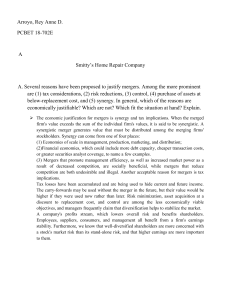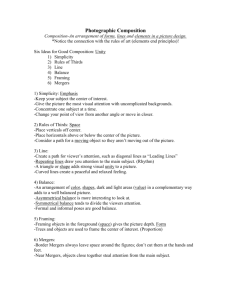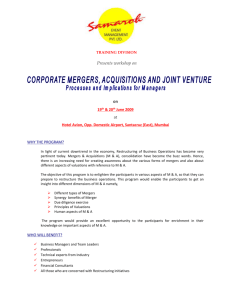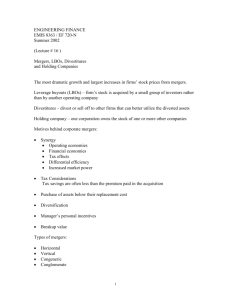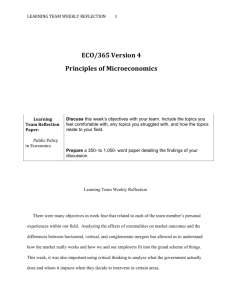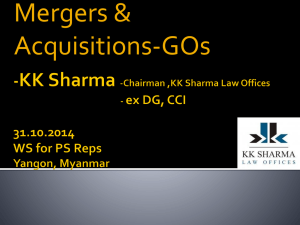Answers
advertisement
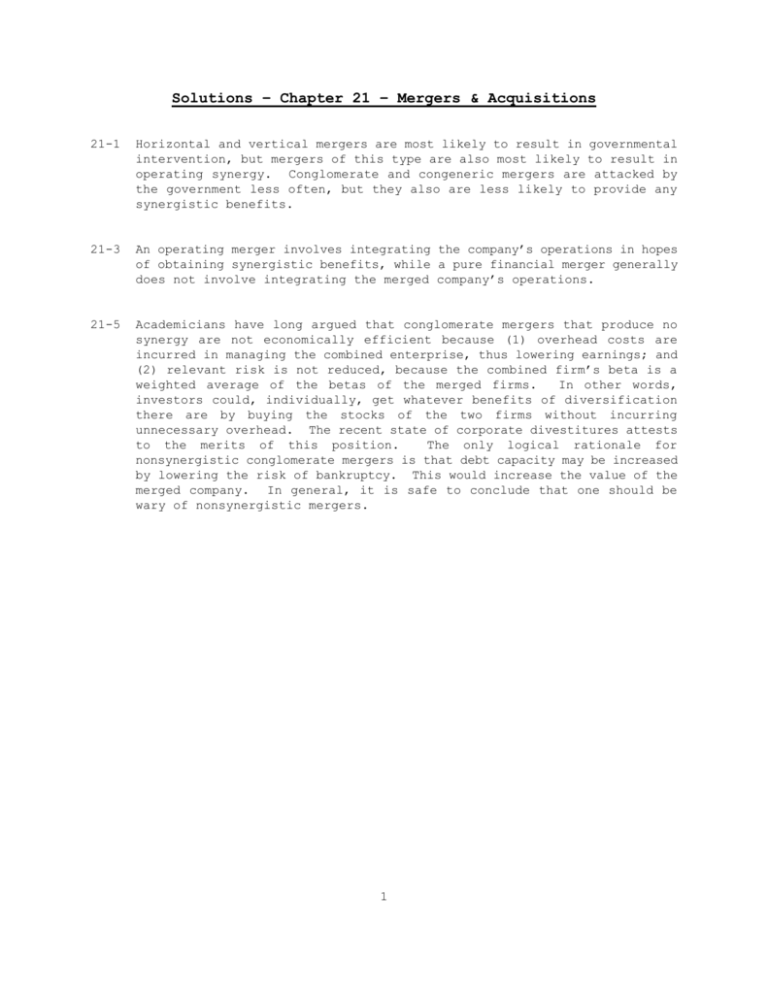
Solutions – Chapter 21 – Mergers & Acquisitions 21-1 Horizontal and vertical mergers are most likely to result in governmental intervention, but mergers of this type are also most likely to result in operating synergy. Conglomerate and congeneric mergers are attacked by the government less often, but they also are less likely to provide any synergistic benefits. 21-3 An operating merger involves integrating the company’s operations in hopes of obtaining synergistic benefits, while a pure financial merger generally does not involve integrating the merged company’s operations. 21-5 Academicians have long argued that conglomerate mergers that produce no synergy are not economically efficient because (1) overhead costs are incurred in managing the combined enterprise, thus lowering earnings; and (2) relevant risk is not reduced, because the combined firm’s beta is a weighted average of the betas of the merged firms. In other words, investors could, individually, get whatever benefits of diversification there are by buying the stocks of the two firms without incurring unnecessary overhead. The recent state of corporate divestitures attests to the merits of this position. The only logical rationale for nonsynergistic conglomerate mergers is that debt capacity may be increased by lowering the risk of bankruptcy. This would increase the value of the merged company. In general, it is safe to conclude that one should be wary of nonsynergistic mergers. 1
